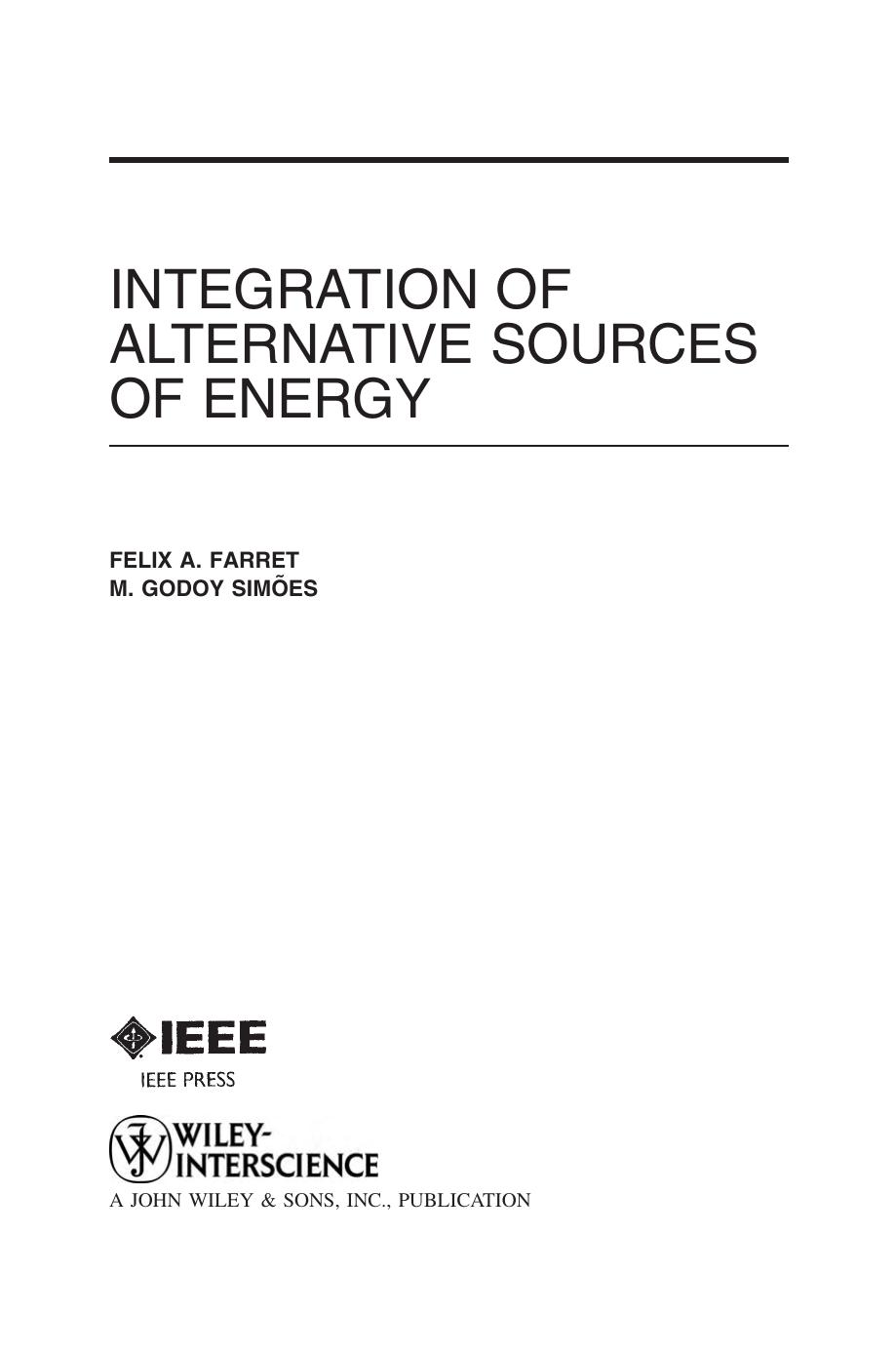

Most ebook files are in PDF format, so you can easily read them using various software such as Foxit Reader or directly on the Google Chrome browser.
Some ebook files are released by publishers in other formats such as .awz, .mobi, .epub, .fb2, etc. You may need to install specific software to read these formats on mobile/PC, such as Calibre.
Please read the tutorial at this link: https://ebookbell.com/faq
We offer FREE conversion to the popular formats you request; however, this may take some time. Therefore, right after payment, please email us, and we will try to provide the service as quickly as possible.
For some exceptional file formats or broken links (if any), please refrain from opening any disputes. Instead, email us first, and we will try to assist within a maximum of 6 hours.
EbookBell Team

4.3
38 reviewsA unique electrical engineering approach to alternative sources of energy
Unlike other books that deal with alternative sources of energy from a mechanical point of view, Integration of Alternative Sources of Energy takes an electrical engineering perspective. Moreover, the authors examine the full spectrum of alternative and renewable energy with the goal of developing viable methods of integrating energy sources and storage efficiently. Readers become thoroughly conversant with the principles, possibilities, and limits of alternative and renewable energy.
The book begins with a general introduction and then reviews principles of thermodynamics. Next, the authors explore both common and up-and-coming alternative energy sources, including hydro, wind, solar, photovoltaic, thermosolar, fuel cells, and biomass. Following that are discussions of microturbines and induction generators, as well as a special chapter dedicated to energy storage systems. After setting forth the fundamentals, the authors focus on how to integrate the various energy sources for electrical power production. Discussions related to system operation, maintenance, and management, as well as standards for interconnection, are also set forth.
Throughout the book, diagrams are provided to demonstrate the electrical operation of all the systems that are presented. In addition, extensive use of examples helps readers better grasp how integration of alternative energy sources can be accomplished.
The final chapter gives readers the opportunity to learn about the HOMER Micropower Optimization Model. This computer model, developed by the National Renewable Energy Laboratory (NREL), assists in the design of micropower systems and facilitates comparisons of power generation techniques. Readers can download the software from the NREL Web site.
This book is a must-read for engineers, consultants, regulators, and environmentalists involved in energy production and delivery, helping them evaluate alternative energy sources and integrate them into an efficient energy delivery system. It is also a superior textbook for upper-level undergraduates and graduate students.
**
Review"...an attractive reference book for research, consulting and development engineers...also, it can be used...in university." (IEEE Industrial Electronics Society Newsletter, March 2006)
A unique electrical engineering approach to alternative sources ofenergy
Unlike other books that deal with alternative sources of energyfrom a mechanical point of view, Integration of Alternative Sourcesof Energy takes an electrical engineering perspective. Moreover,the authors examine the full spectrum of alternative and renewableenergy with the goal of developing viable methods of integratingenergy sources and storage efficiently. Readers become thoroughlyconversant with the principles, possibilities, and limits ofalternative and renewable energy.
The book begins with a general introduction and then reviewsprinciples of thermodynamics. Next, the authors explore both commonand up-and-coming alternative energy sources, including hydro,wind, solar, photovoltaic, thermosolar, fuel cells, and biomass.Following that are discussions of microturbines and inductiongenerators, as well as a special chapter dedicated to energystorage systems. After setting forth the fundamentals, the authorsfocus on how to integrate the various energy sources for electricalpower production. Discussions related to system operation,maintenance, and management, as well as standards forinterconnection, are also set forth.
Throughout the book, diagrams are provided to demonstrate theelectrical operation of all the systems that are presented. Inaddition, extensive use of examples helps readers better grasp howintegration of alternative energy sources can be accomplished.
The final chapter gives readers the opportunity to learn aboutthe HOMER Micropower Optimization Model. This computer model,developed by the National Renewable Energy Laboratory (NREL),assists in the design of micropower systems and facilitatescomparisons of power generation techniques. Readers can downloadthe software from the NREL Web site.
This book is a must-read for engineers, consultants, regulators,and environmentalists involved in energy production and delivery,helping them evaluate alternative energy sources and integrate theminto an efficient energy delivery system. It is also a superiortextbook for upper-level undergraduates and graduate students.